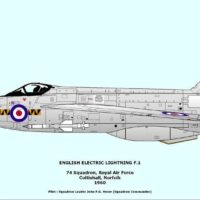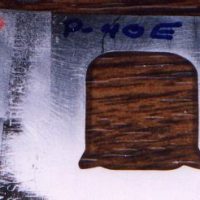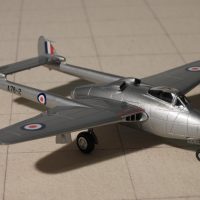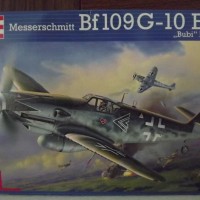Two Destroyers in 1/72 Scale
In my quest to build all of the Navy/Marine dive bombers, I keep discovering aircraft that I knew nothing about. The latest discovery is the Douglas Destroyer, which the Navy requested in 1941, hoping to replace both the Douglas SBD and the Curtiss SB2C in service at the time. The new aircraft, designated XSB2D-1, would be a 2 seater that would carry up to 4200 lbs of bombs, or one torpedo. In a design that looks very similar to the Douglas A-26, the new aircraft would have twin remote-control turrets for defensive purposes.
The prototype first flew in April of 1943 and seemed to perform well. However, the Navy changed their requirements, asking for the new aircraft to carry two torpedoes. So Douglas redesigned the aircraft by removing the 2nd crewman and the rear defensive turrets, while adding more fuel and armor. The new aircraft was then designated BTD-1, and first flew in March of 1944. The performance of the aircraft declined in this new configuration, but regardless, production went forward, and 26 (28?) aircraft had been delivered by the time Japan surrendered in August of 1945. Further orders were cancelled, and Douglas proceeded with work on the replacement aircraft already in progress, the BT2D Dauntless II, also known as the AD-1 Skyraider.
An interesting footnote, only one aircraft survives, and it is both the only XSB2D in existence, as well as the only BTD-1 in existence. Two XSB2Ds were built, and one crashed. The second one was converted to a BTD-1, and currently resides in the Hixson Flight Museum in Rome, Georgia, where it is being restored.
Up to now, I've done what I could to build all these Navy/Marine dive-bombers in 1/48 scale, and for the most part have succeeded (even going to the extent of making my own vacu-form kit then nothing else was available). However, these two kits were available in 1/72 only. But the fact that BOTH versions were available enticed me into dipping my toe in the smaller scale world. These are resin kits that come with photo-etched parts, and I don't have much experience with resin, nor with 1/72 scale. The smaller scale challenged my skill (and my patience), but overall it was an enjoyable experience. The kits themselves seem to be fairly detailed and went together without too much trouble. The biggest problem was the flash on some parts, and the many, many (many) air bubbles in the fuselage and wings. Filling all the bubbles and sanding smooth without erasing panel lines was difficult, especially on the fuselage, where the panel lines are not sharply defined. The panel lines on the wings were very sharp, but the trailing edge of the wings were so fine and delicate, there was shipping damage in some spots.
I built the XSB2D first, and had some difficulty getting the rear cockpit assembly to fit properly inside the fuselage. I'm not sure I ever got it right, but it's in there! The nose wheel strut was delicate and broke a couple of times, and this may be why the angle of the aircraft did not come out right. In photographs, the fuselage leans back toward the tail pretty significantly in both versions. My XSB2D did not come out that way, and I didn't really notice until I built the BTD-1 and it DID lean back like it was supposed to. I also didn't notice until I assembled the second kit that the elevators are not horizontal, but angled upwards. I went ahead and broke them off the BTD-1 and reglued at the proper angle, but first kit was already complete, so I didn't mess with it.
Both kits were primed with Tamiya black primer, then painted Vallejo light gray, Vallejo intermediate blue, and Model Master sea blue. The first kit came with one set of decals, the stars and bars with the red outline. There were numerous photos online of the XSB2D with just stars in the four places, so I did mine up that way using spare decals. I also left off the main gear doors as the photos showed the actual craft in that configuration.
The second kit had two choices, stars and bars with blue outline, and stars and bars with the red line in the bars, and NATC logo. Unfortunately, these decals disintegrated. So I used the stars and bars with the red outline from the first kit. Hopefully that is somewhat accurate, but it's hard to tell from black and white photos. I opened up the dive brakes on the second kit because they were too cool not to display. They were photo-etched and very delicate, but I managed to get them attached successfully. On the second kit I had an unfortunate accident involving super glue and the vacu-form canopy. Remediation of that goof left the canopy looking like it had been left in the Arizona sun for forty years. Ah well.
Overall I enjoyed building the kits, and really have an interest in this aircraft. I would love to have a 1/48 scale version with dropped flaps and an open bomb bay - maybe I'll make my own one day!


















A new aircraft to me as well, Robert @robgenev665
You did a wonderful job on both.
What an amazing duo, Robert! Fantastic chosen subject, perfectly executed!
Well done!
Both kits look like they were a challenge. Nicely done.
Nice work, Robert. Those are not easy kits.
Yep - had never heard of them! Nice to see the unusual, and nice work putting these together.
Well done, Robert! I only heard about these in an article in an old Air Classic magazine, that these designs led up to what would become the A-1 Skyraider.